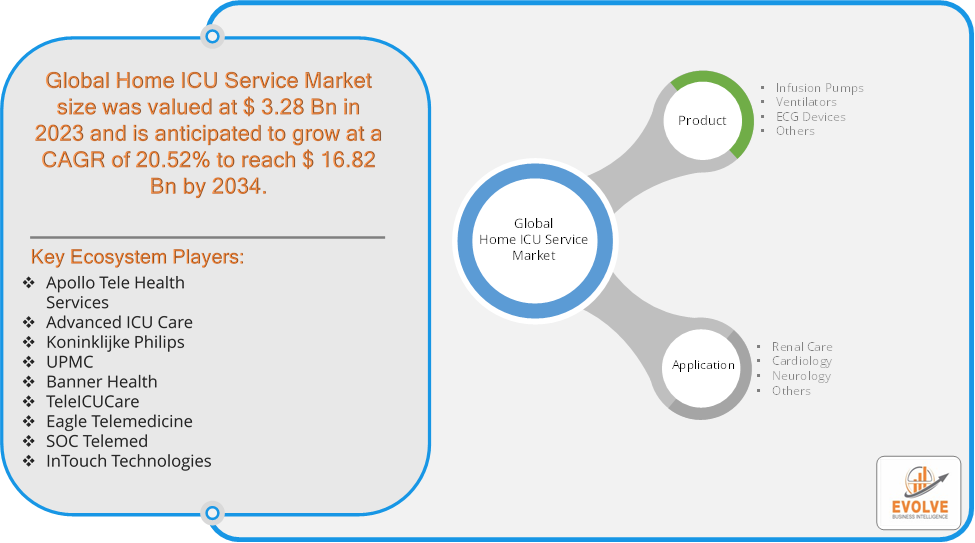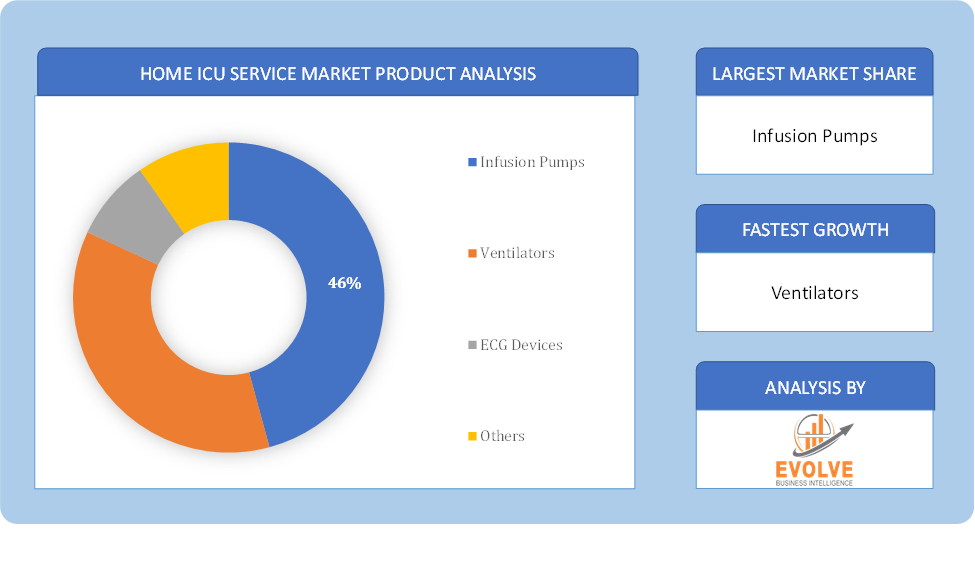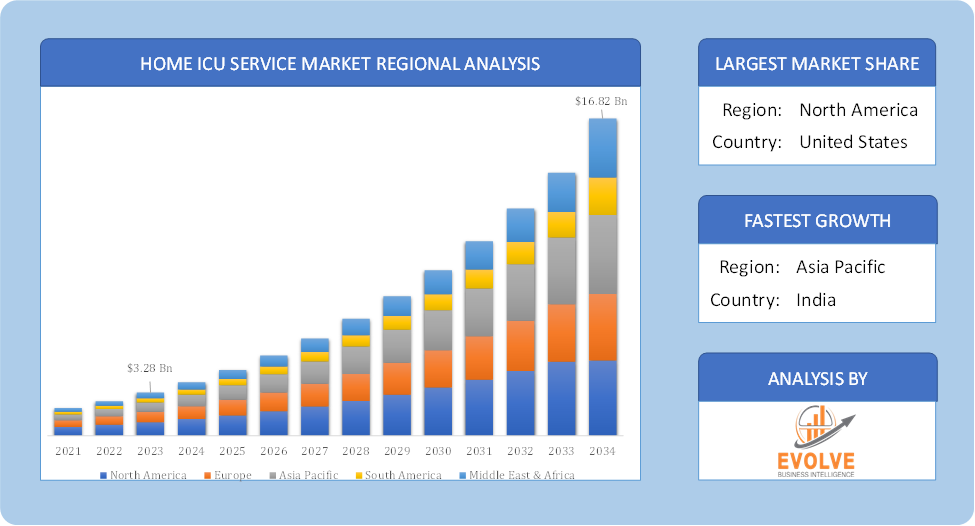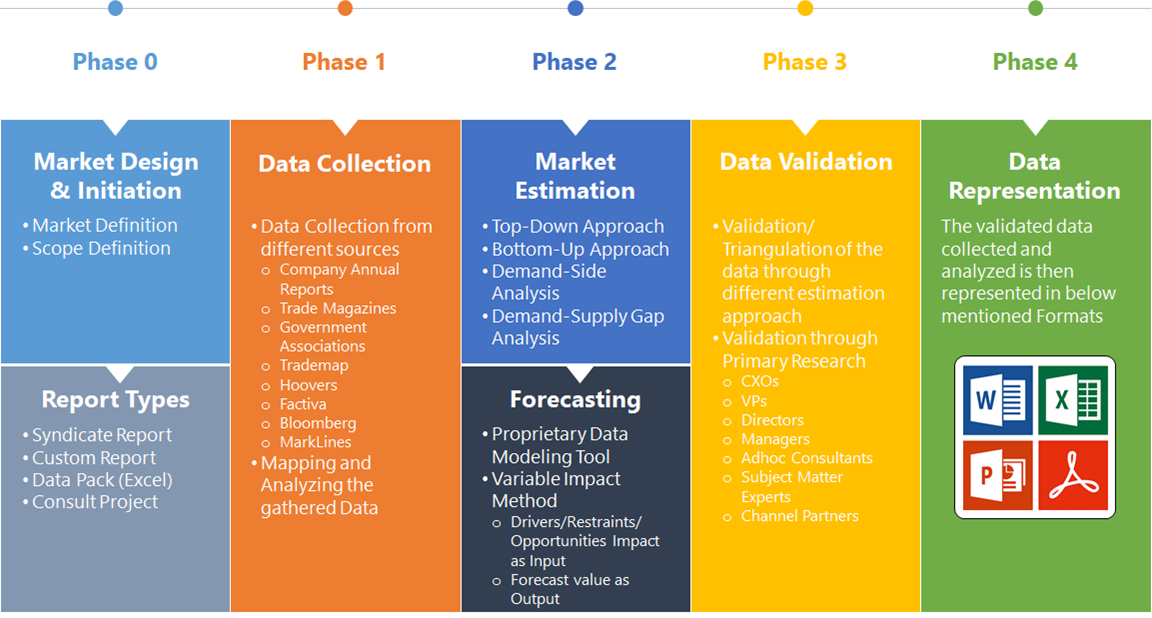Home ICU Service Market Overview
The Home ICU Service Market size accounted for USD 3.28 Billion in 2023 and is estimated to account for 4.17 Billion in 2024. The Market is expected to reach USD 16.82 Billion by 2034 growing at a compound annual growth rate (CAGR) of 20.52% from 2024 to 2034. The Home ICU Service Market refers to the provision of Intensive Care Unit (ICU) services that are delivered directly to patients in their homes. This market caters to individuals requiring critical medical care but who prefer or need to remain at home due to factors such as chronic illness, long-term rehabilitation, cost considerations, or hospital bed shortages.
The services offered typically include advanced monitoring systems, ventilation support, dialysis, and continuous nursing care with oversight from specialized medical professionals like doctors, nurses, and therapists. These services mimic the care provided in a hospital’s ICU, but in a more comfortable, home-based setting.
Global Home ICU Service Market Synopsis
 Home ICU Service Market Dynamics
Home ICU Service Market Dynamics
The major factors that have impacted the growth of Home ICU Service Market are as follows:
Drivers:
Ø Technological Advancements
Innovations in remote monitoring, telemedicine, and portable medical devices (like ventilators, dialysis machines, and monitoring systems) make it easier to deliver critical care at home. Home ICU services often prove to be more cost-effective than prolonged hospital stays, reducing overall healthcare costs for patients and healthcare systems. The high expenses associated with ICU admissions in hospitals are pushing both patients and healthcare providers to seek more affordable alternatives like home-based ICUs.
Restraint:
- Perception of High Initial Setup Costs and Technological Challenges
Establishing an ICU at home requires expensive medical equipment, technology, and professional expertise, which can be a significant financial barrier for many families. While advanced medical devices enable ICU care at home, technical failures, power outages, or insufficient internet connectivity can disrupt remote monitoring and critical care services. Many patients and families are not fully aware of the availability of home ICU services or may be hesitant to adopt this alternative due to concerns over the level of care and safety compared to hospital ICUs.
Opportunity:
⮚ Rising Demand for Telemedicine and Remote Monitoring
The increasing adoption of telemedicine and remote patient monitoring technologies offers a major opportunity for home ICU services. These technologies enable continuous monitoring and virtual consultations, making critical care more accessible and efficient. As healthcare shifts toward more personalized, patient-centric models, home ICU services are uniquely positioned to cater to individual patient needs in a comfortable, familiar environment. This trend aligns with the increasing demand for customized care plans.
Home ICU Service Market Segment Overview
Based on Product, the market is segmented based on Infusion Pumps, Ventilators, ECG Devices and Others. The Ventilators segment dominant the market. Ventilators at home provide an economically viable alternative to prolonged hospital stays, as patients can receive the necessary respiratory care in a familiar environment at a lower cost and as the elderly population grows, the need for ventilators in home ICU settings increases, given the higher prevalence of age-related respiratory issues.
By Application
Based on Application, the market segment has been divided into Renal Care, Cardiology, Neurology and Others. The Cardiology segment dominant the market. The rising prevalence of cardiovascular conditions like heart failure, coronary artery disease, and arrhythmias has created a strong demand for home-based cardiac ICU services. Patients can receive ongoing monitoring and care without the need for prolonged hospital stays.
Global Home ICU Service Market Regional Analysis
Based on region, the global Home ICU Service Market has been divided into North America, Europe, Asia-Pacific, the Middle East & Africa, and Latin America. North America is projected to dominate the use of the Home ICU Service Market followed by the Asia-Pacific and Europe regions.
 Home ICU Service North America Market
Home ICU Service North America Market
North America holds a dominant position in the Home ICU Service Market. North America, particularly the United States, holds a significant share of the Home ICU Service Market due to a well-developed healthcare system, a growing aging population, and the high prevalence of chronic diseases and increasing preference for home-based care and efforts to reduce hospital readmissions.
Home ICU Service Asia-Pacific Market
The Asia-Pacific region has indeed emerged as the fastest-growing market for the Home ICU Service Market industry. The Asia-Pacific region, particularly in countries like Japan, China, and India, is expected to witness significant growth in the Home ICU Service Market due to a growing elderly population and the increasing burden of chronic diseases and rapid advancements in telehealth and growing demand for home-based care.
Competitive Landscape
The global Home ICU Service Market is highly competitive, with numerous players offering a wide range of software solutions. The competitive landscape is characterized by the presence of established companies, as well as emerging startups and niche players. To increase their market position and attract a wide consumer base, the businesses are employing various strategies, such as product launches, and strategic alliances.
Prominent Players:
- Apollo Tele Health Services
- Advanced ICU Care
- Koninklijke Philips
- UPMC
- Banner Health
- TeleICUCare
- Eagle Telemedicine
- SOC Telemed
- InTouch Technologies
Scope of the Report
Global Home ICU Service Market, by Product
- Infusion Pumps
- Ventilators
- ECG Devices
- Others
Global Home ICU Service Market, by Application
- Renal Care
- Cardiology
- Neurology
- Others
Global Home ICU Service Market, by Region
- North America
- US
- Canada
- Mexico
- Europe
- UK
- Germany
- France
- Italy
- Spain
- Benelux
- Nordic
- Rest of Europe
- Asia Pacific
- China
- Japan
- South Korea
- Indonesia
- Austalia
- Malaysia
- India
- Rest of Asia Pacific
- South America
- Brazil
- Argentina
- Rest of South America
- Middle East & Africa
- Saudi Arabia
- UAE
- Egypt
- South Africa
- Rest of Middle East & Africa
| Parameters | Indicators |
|---|---|
| Market Size | 2034: USD 16.82 Billion |
| CAGR (2024-2034) | 20.52% |
| Base year | 2022 |
| Forecast Period | 2024-2034 |
| Historical Data | 2021 (2017 to 2020 On Demand) |
| Report Coverage | Revenue Forecast, Competitive Landscape, Growth Factors, and Trends |
| Key Segmentations | Product, Application |
| Geographies Covered | North America, Europe, Asia-Pacific, South America, Middle East, Africa |
| Key Vendors | Apollo Tele Health Services, Advanced ICU Care, Koninklijke Philips, UPMC, Banner Health, TeleICUCare, Eagle Telemedicine, SOC Telemed, InTouch Technologies and Apollo Tele Health Services. |
| Key Market Opportunities | · Rising Demand for Telemedicine and Remote Monitoring · Growing Focus on Personalized and Patient-Centric Care |
| Key Market Drivers | · Technological Advancements · Cost-Effectiveness and Rising Healthcare Costs in Hospitals |
REPORT CONTENT BRIEF:
- High-level analysis of the current and future Home ICU Service Market trends and opportunities
- Detailed analysis of current market drivers, restraining factors, and opportunities in the future
- Home ICU Service Market historical market size for the year 2021, and forecast from 2023 to 2033
- Home ICU Service Market share analysis at each product level
- Competitor analysis with detailed insight into its product segment, Government & Defense strength, and strategies adopted.
- Identifies key strategies adopted including product launches and developments, mergers and acquisitions, joint ventures, collaborations, and partnerships as well as funding taken and investment done, among others.
- To identify and understand the various factors involved in the global Home ICU Service Market affected by the pandemic
- To provide a detailed insight into the major companies operating in the market. The profiling will include the Government & Defense health of the company’s past 2-3 years with segmental and regional revenue breakup, product offering, recent developments, SWOT analysis, and key strategies.








